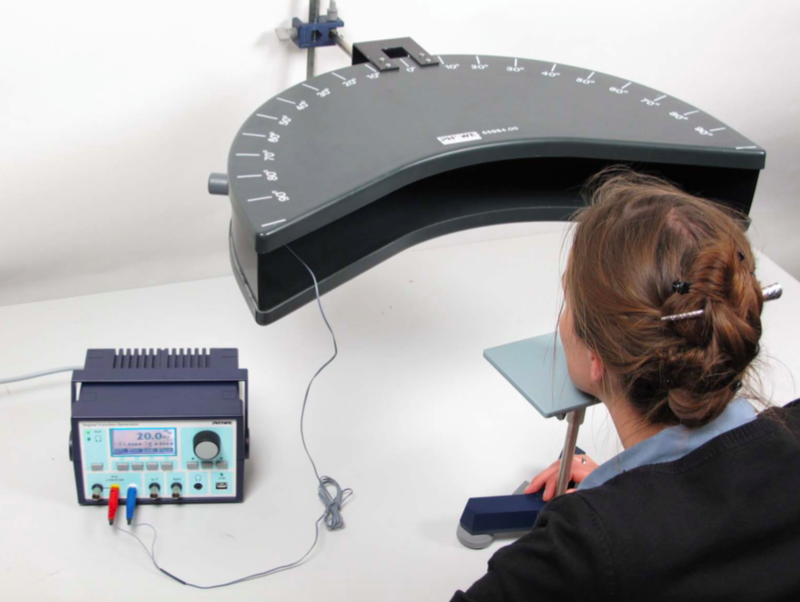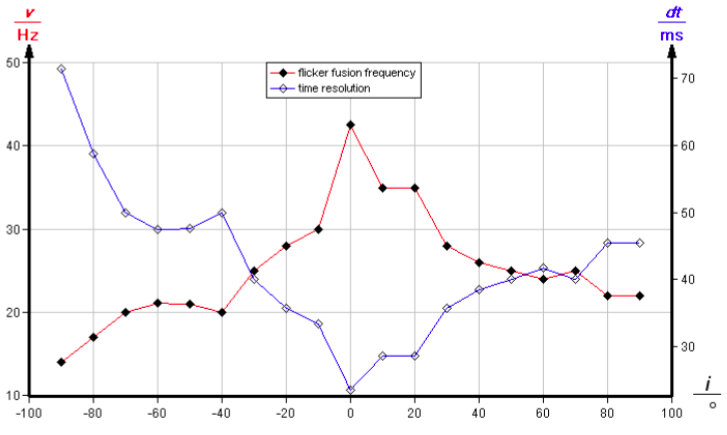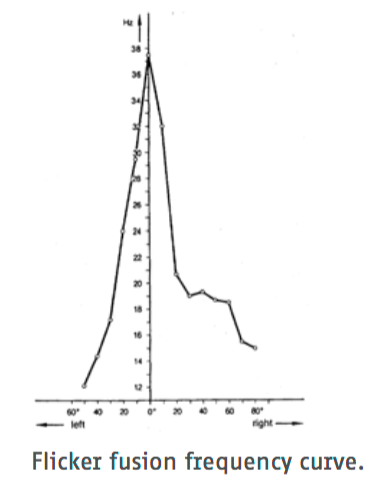Item no.: P4070300
Principle
As excitation of the light-perceptive cells of the retina always takes a little longer than the light stimulus, only a limited number of stimuli per unit of time can be processed (time-related resolving power of the eye). If a light source is switched on and off periodically in increasingly rapid sequence the eye at first perceives the individual flashes, then the appearance of flicker occurs and finally the impression of a continuous light (fusion of the flicker).
Tasks
- Determine the flashing frequency of an LED at which the impression of a continuous light just occurs
- Change the direction of incidence of the light using a perimeter
- Determine the flicker fusion thershold of the left and right eye in relation to the direction of incidence of light stimulus and the state of adaptation of the eyes.
What you can learn about
- Perimeter
- Time-related resolving power
- Flicker fusion frequency
- Light/dark adapted eye




